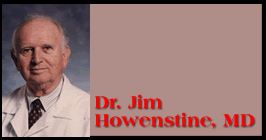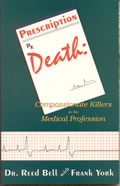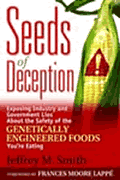Other
Howenstine Articles:
Use of CoQ10
to Treat Malignancies
Why You Should Avoid Taking Vaccines
HIGH MEAT INTAKE APPEARS TO CAUSE CANCER & HEART ATTACKS
By Dr. James
Howenstine, MD.
December 27, 2004
NewsWithViews.com
The Atkins Diet, which recommends a high intake of meat and dairy products combined with carbohydrate restriction, has enabled many persons to lose weight. There is evidence that a high intake of red meat may cause an increase in both cancer and heart attacks.
During World War I, the British blockade caused loss of half the normal food supply to Denmark. Mikkel Hendhede, of the Danish Ministry of Health, proposed that the wasteful use of grain to feed cattle for the production of meat be banned, and that the Danish nation should eat grain instead. He pointed out that large vegetarian populations in Africa and India were healthy on a meat-free diet. Despite violent objections from the medical community, this plan was implemented. Careful scrutiny of death records disclosed no deaths from protein malnutrition and the death rate fell by 17%, primarily due to a decrease in deaths from cancer.
When Albert Schweitzer started his hospital in Gabon, he noticed that there was no cancer in that populace. These natives ate a diet primarily consisting of cassava and millet. This diet contains about 20% of the iron in the high meat diet being consumed by Americans.
The Hopi Indians in Arizona eat a vegetarian diet whose primary ingredient is calico corn. Their incidence of cancer in 1974 was one case per 100,000. At the same time, the white population in Arizona was having one case of cancer for every four persons. Physicist A. Keith Brewer believed that the Hopi food, grown on high-cesium volcanic soil, prevented cancer by alkalinizing the body, making it very difficult for cancers to start and survive. The Hopis were known to burn the leaves of the chamisa plant and add the ashes to their corn meal. This ash is high in cesium, which is a valuable therapy for cancer.
The nearby Pueblo Indians were persuaded by free food stamps to cease their traditional diet and start eating red meat like the white persons do. Their incidence of cancer promptly rose from one case per thousand to one case in four - the same as was noted in white persons.
Colon cancer worldwide is proportional to the quantity of beef consumed in the diet. Scotland has as high a beef consumption as any nation on earth and their death rate from colon cancer is as high as any nation. In Scotland there are 15,000 Asians of Indian background who are lactovegetarians. There were only two cases of colon cancer in the Indians compared to a rate of 14.2[1] cases of colon cancer in the native Scots.
In 1960 there were no cases of colon cancer in the blacks living in Kampala, Uganda. These persons eat a grain vegetarian diet high in millet and corn. These same individuals had no cases of heart attacks. An autopsy study of the hearts from 1427 males in Kampala, Uganda revealed only one case of a small well-healed heart attack. These autopsy results were compared to an identical number of white and black males in St. Louis, Missouri where it was learned that one in four males had died of a heart attack. The degree of fatty deposits (atheroma) in the arteries of the Ugandan males was exactly the same as that of U. males. However, there was extensive evidence of blood clots in the heart arteries of the US males, but almost none in Ugandan males. Dr. Isidore Snapper spent much time in northern China studying the health of those Chinese persons who were eating a diet of soy and millet. He found that insulin-needing diabetics in this region of China had no problem with advanced arteriosclerosis and gangrene, whereas similar diabetics in the U.S. have serious trouble with accelerated arteriosclerosis and gangrene. The millet in the Chinese diet has an anti-clotting effect in the arteries, which affords a plausible explanation for the absence of clots in the Ugandan male heart arteries.
Japan has very little animal protein in their diet, which is largely vegetarian with much sea food. In 1963, 1964 and 1965, the average death rate from all cancers in the industrial Western nations was 181 per 100,000. In these same years, the death rate from all cancers in Japan was only 107 per 100,000.
Currently in Japan, nearly 80% of males smoke cigarettes. In the U.S., only 30% of males smoke cigarettes, but the death rate from lung cancer is four times higher than in Japan. Great Britain and the United States produce tobacco, which during processing is treated with sugar, unlike in the rest of the world. When smoked, this sugar-treated tobacco produces a strong carcinogen, which is believed to be responsible for some of the higher lung cancer death rate in U.S. and British citizens. The lack of meat in the Japanese diet probably also contributes to their lower incidence of lung cancer.
Leukemia has been observed to increase in direct proportion to the amount of animal protein in the diet. Dr. W. A. Priester of the National Cancer Institute has noted that squamous cell cancer of the eyes in cattle experiences accelerated growth when the cattle's food was supplemented with animal protein.
High iron intake from meat is strongly immunosuppressive. This means that persons eating large amounts of meat will have trouble killing cancer cells, and may be expected to have a higher death rate from cancer. The blacks of Africa have very little iron in their diets, which may explain their freedom from cancer. Bacteria and cancer cells have a great need for iron. Patients with prolonged infections frequently develop iron deficiency anemia as their iron reserves are consumed. The white cell immunocytes, which fight both cancer cells and bacteria, learn to detect both bacteria and cancer cells by the presence of iron in these tumor cells and bacteria. Immunocytes are attracted to iron stores in the body and become attached to these iron deposits. Therefore, persons with excessive stores of iron will have a lack of working immunocytes to kill tumor cells and bacteria.
Dr. William B. Coley, a New York surgeon, did an extensive review of hospital records of cancer patients in the 1890s to see if he could identify any factor that might lead to recovery from cancer. He discovered that an illness with fever often was followed by remission of cancer. This led him to develop a killed vaccine (Coley's toxins) from the streptococcal bacteria that causes erysipelas. These bacterial toxins were quite successful in treating cancer. By 1980 there were 449 well-documented cases of recovery[2] from cancer resulting from bacterial infections that produced fever. One reason these patients recovered was felt to be the development of iron deficiency during the infection. This freed up immunocytes to kill cancer cells.
In 1984 E. D. Weinsberg of Indiana University issued a long report showing that the withholding of iron[3] from the diet was a good way to avoid cancer. He also felt that it was vital to place cancer patients on a low iron diet (meat free). Dr. R. G. Stevens of the U.S. National Cancer Institute found that males with high body stores of iron had more cancer than males with normal body iron reserves. Natives eating vegetarian foods in Africa are consuming only 20% of the quantity of iron found in our high meat diet.
More than 50,000,000 U.S. women are nearly completely free from heart attacks during their menstruating years. Dr. Jerome L. Sullivan, of the Pathology Department of the South Florida College of Medicine in Tampa, thinks that the menstrual bleeding prevents the accumulation of toxic stores of iron in the heart[4].
Metals including iron, lead, cadmium, and mercury are known to accumulate below the lining membrane (endothelium) of arteries. This accumulation causes an inflammatory reaction that interferes with the normal flow of oxygen into tissues and the removal of waste products from tissues. This is associated with "patching" of artery walls where the collagen structure is lacking due to a deficiency of vitamin C (Dr. Linus Pauling). In this vitamin C depleted state, the weak portions of arteries where the arterial stream strikes an artery becomes coated with lipoprotein (a) in an attempt by the body to strengthen the damaged artery. Lipoprotein (a) is a very sticky substance that promotes clotting of blood with platelet deposition. This often occurs in areas of an artery where an arterial blood stream entering the artery forcefully strikes the artery wall. The resulting buildup of clot, fibrin, and calcium produces plaques that narrow the arterial stream and slow blood flow. When a sudden clot occurs, patients may experience a heart attack depending on the extent of their extra blood vessels (collateral circulation).
Chelation therapy using EDTA and other beneficial substances such as contained in Essential Daily Defense (malic acid, garlic, carrageenan, betaine, papain, B6, MSM, red yeast, hawthorn berry, silica, beta sitosterol, niacin) slowly and steadily removes these toxic metal deposits at the same time creates a less viscous more freely flowing blood (carrageenan red algae has anti-clotting effects) which prevents new heart attacks and strokes. Over years, arteries can again become wide open.
Post-menopausal women and men can probably reduce their risk of heart disease and cancer by donating blood every three months or by curtailing red meat intake. Monitoring blood iron stores will show if the 3-month blood donating frequency is adequate to lower iron storage levels. Curtailing meat intake will lead to a greater quantity of carbohydrate in the diet. Be sure these carbohydrates are not high glycemic (potatoes, white rice, white bread, pasta, sweets, and bananas), because foods that quickly elevate blood sugar values (highly glycemic) cause the release of large amounts of insulin. This increased output of insulin accelerates aging by causing arteriosclerosis, leading to a shortened life span.
The conventional medical view is that lack of the female hormones after menopause is the cause for women starting to have heart attacks at the same rate as men. The iron explanation appears to make more sense, particularly when there is no convincing evidence that restoration of female hormones has decreased heart disease. Certainly the use of pharmaceutical estrogen (Premarin) and progesterone (Provera) has been proven to be dangerous by increasing the incidence of malignancies.
Make sure your vitamin preparation contains no iron and that you are not getting iron from white bread, baked goods, and cereals, which are often fortified with iron. Whole grain bread and Shredded Wheat contain no iron.
Persons with the hereditary hemolytic anemia (thalassemia major) often have massive iron deposition due to needed blood transfusions. This iron depositing in heart muscle can be fatal at a younger age.
European physicians caring for native patients in Africa are prone to correct "iron deficiency anemia" with prescriptions for iron. This supplemental iron often leads to bacterial infections and malaria because of the immunosuppressive effects on killer white cells.
Biochemist Wayne Martin points out that low-grade vegetable protein[5] such as that eaten in Africa and India may be just as important in preventing cancer as the low iron content seen in these diets. Mark F. McCarty of Pantox Laboratories explains that low-grade vegetable proteins from vegetable diets are lacking in the essential amino acids and high in the non-essential amino acids. This has always been considered to be undesirable in conventional medical thinking. However, the non-essential amino acids found in vegetable proteins cause more glucagon[6] to be produced. This glucagon has anticancer activity.
Glucagon is a hormone produced in the pancreas, which causes the liver to convert glycogen into sugar and to convert the amino acids absorbed from high protein meals into sugar. This capability of glucagon to raise blood sugar values has led many physicians to encourage patients taking insulin to keep injectable glucagon in their refrigerator for emergency use in case of a low blood sugar from a severe insulin reaction.
Glucagon has a favorable influence in cancer patients because it induces the production of cyclic AMP. This increase in cyclic AMP causes cancer cells to regain contact inhibition[7] which makes them less invasive and more benign. The increasing levels of cyclic AMP tend to inhibit IGF-1 (insulin like growth factor) a substance that has caused concern because it may speed up the growth and spread of tumor cells. Glucagon also appears to promote normal death of cancer cells (apoptosis) which tend to be long lived.
Three forms of cancer (breast, prostate, and colon) appear to be prevented by use of a vegan's protein diet. Chinese women in the city of Singapore were studied for breast cancer. The women eating a western diet had a three fold greater risk for developing breast cancer when compared to women eating the vegan's typical diet of northern China (soya, millet).
Discontinuing or decreasing
the intake
of meat - particularly beef - appears to be a sensible health measure
as it could improve immune function leading to more effective
resolution of infections and killing of cancer cells. Current concepts
about cancer believe that all persons are identifying and killing
multitudes of cancer cells as long as their immune system is healthy.
Removing the detrimental immunosuppression caused by excessive iron
deposition in the body seems likely to improve the performance of our
immune systems. Persons not wishing to give up eating meat can probably
stay out of trouble by donating blood regularly, which should remove
the excess dietary iron. Decreasing
the intake of meat - particularly beef - may decrease the risk of both
heart attack and cancer.
Footnotes:
1
Lancet Jan. 13, 1990
2
Cancer Research Institute Monograph No. 8, 1980
3
Physiology Review; 64:65-102
4
Sullivan, Jerome L. Iron and the sex difference in heart disease.
Lancet June 13, 1981, page 1293
5
Martin, Wayne Atkins Diet May Cause Increase in Heart Attacks and
Cancer Townsend Letter for Doctors & Patients October 2004 #255
pg. 120 -124
6
McCarty Mark F. Vegan proteins may reduce the risk of cancer, obesity
and cardiovascular disease by promoting increased glucagon activity
Medical Hypothesis (6) 459-483 1999
7
Puck T. T. Proceedings of
the National Academy of Science USA 4491-95 Oct. 1977
© 2004 Dr. James Howenstine - All Rights Reserved
Sign Up For Free E-Mail Alerts
E-Mails are used strictly for NWVs alerts, not for sale
Dr.
James A. Howenstine is a board certified specialist in internal
medicine who spent 34 years caring for office and hospital patients.
After 4 years of personal study he became convinced that natural
products are safer, more effective, and less expensive than
pharmaceutical drugs. This research led to the publication of his book
A Physicians Guide To Natural Health Products That Work. Information
about these products and his book can be obtained from amazon.com and
at www.naturalhealthteam.com
and phone 1-800-416-2806 U.S. Dr. Howenstine can be reached at jimhow@racsa.co.cr
and by mail at Dr. James Howenstine, C/O Remarsa USA SB 37, P.O. Box
25292, Miami, Fl. 33102-5292.
The Hopi Indians in Arizona eat a vegetarian diet whose primary ingredient is calico corn. Their incidence of cancer in 1974 was one case per 100,000. At the same time, the white population in Arizona was having one case of cancer for every four persons.








